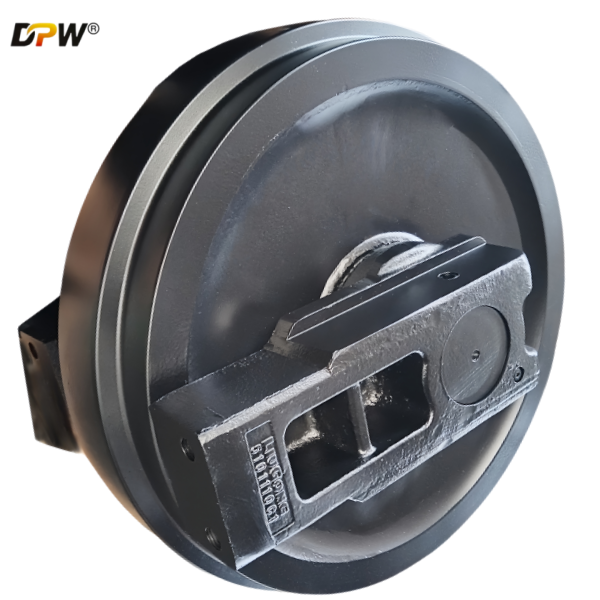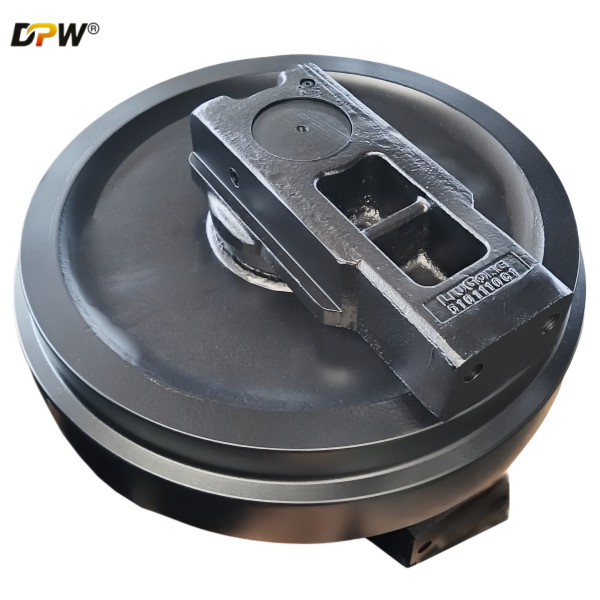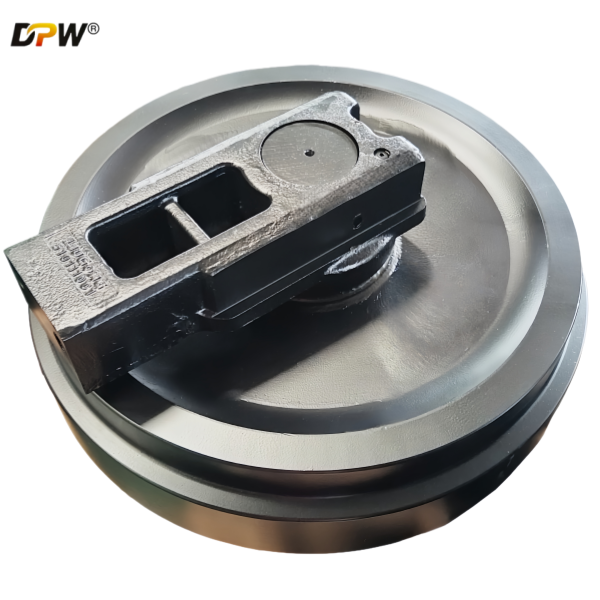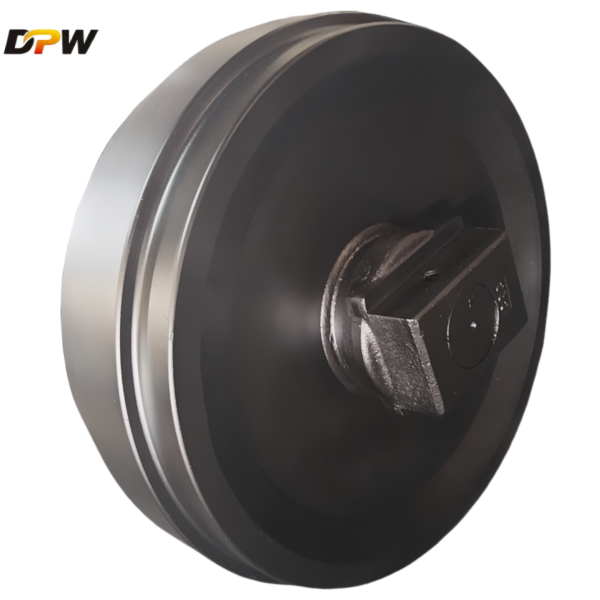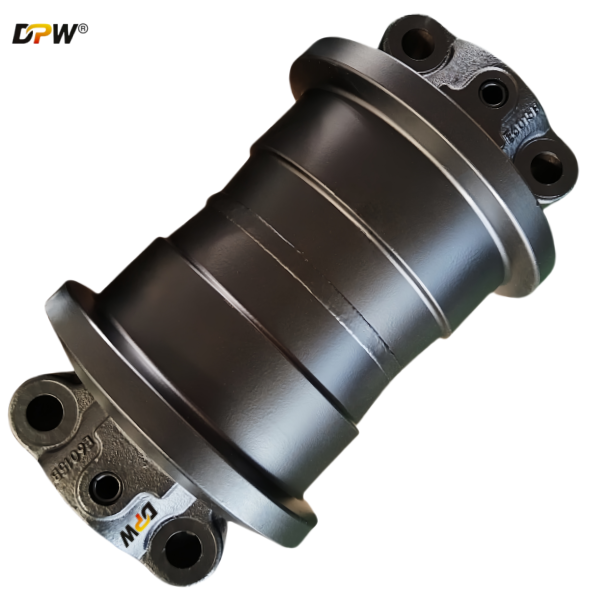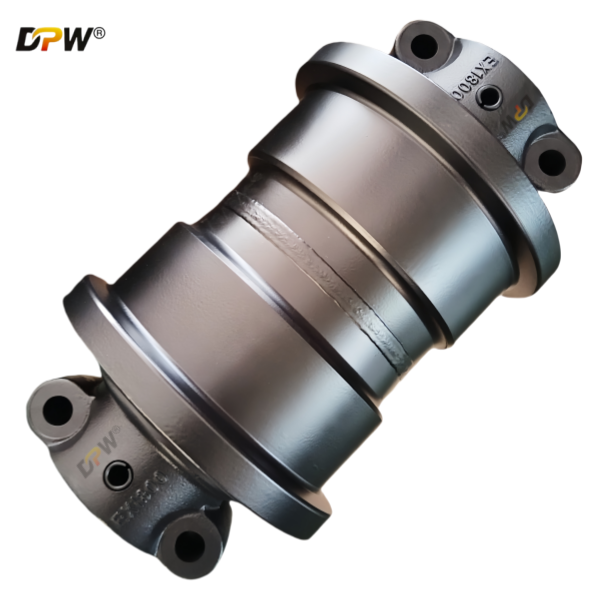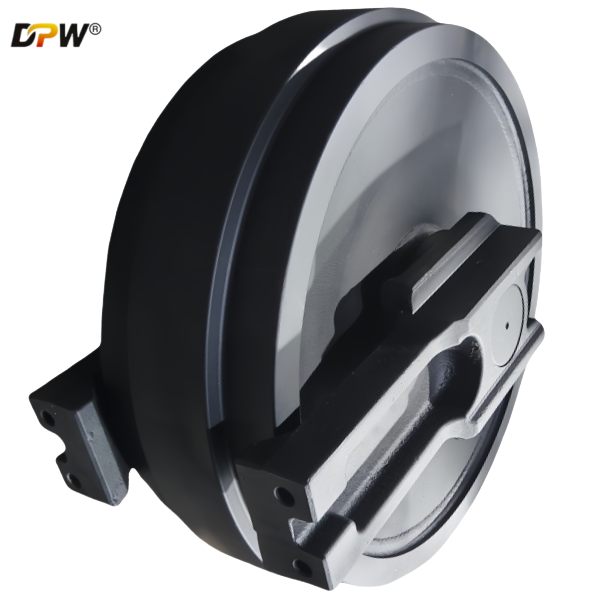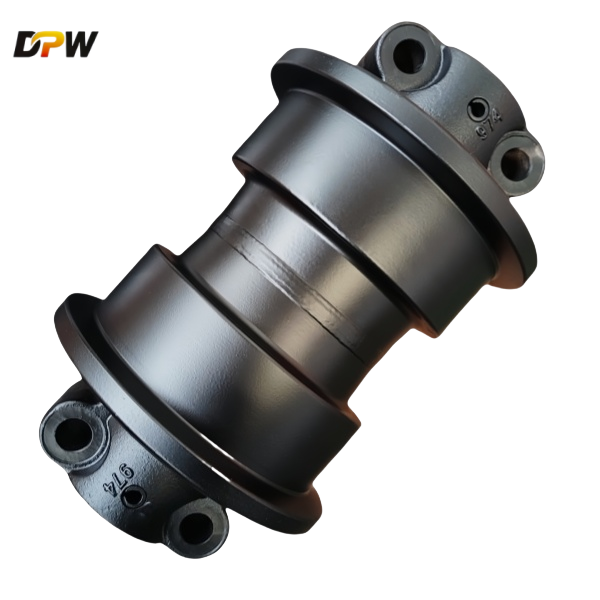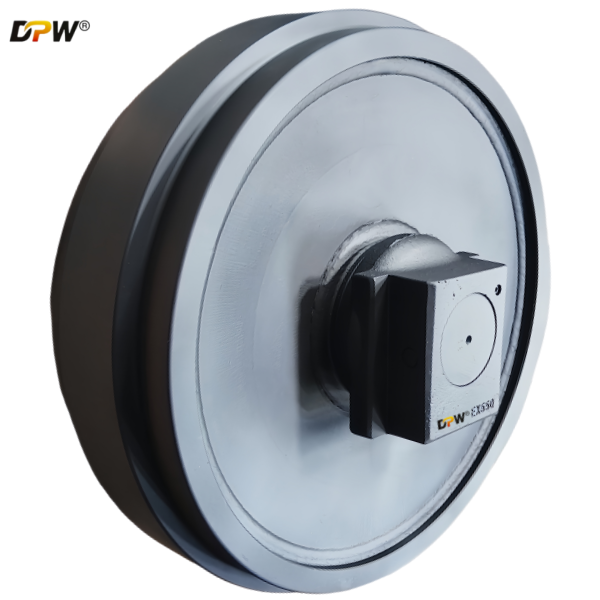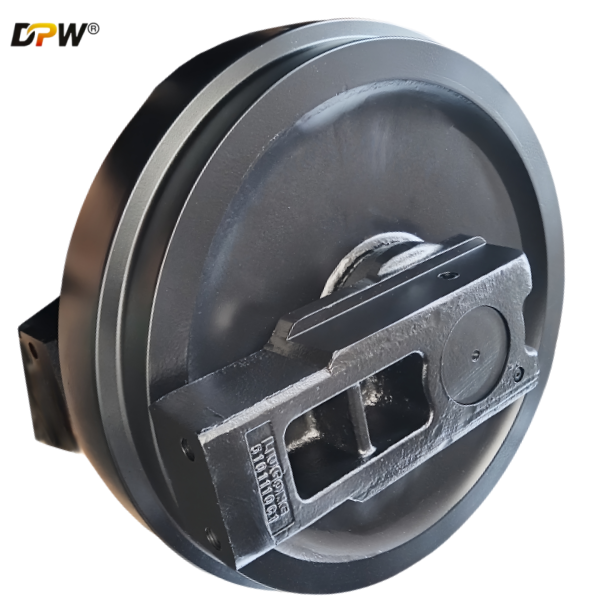
LiuGong 5101110C1 CLG965 Track Front Idler Assy/OEM quality heavy duty undercarriage Parts manufacturer-DPW Parts
Product Specifications
Technical Description: LIUGONG CLG965 Track Front Idler Assembly
1. General Overview & Functional Definition
The LIUGONG CLG965 Track Front Idler Assembly is a fundamental and critically stressed component within the undercarriage system of the LIUGONG CLG965 hydraulic excavator. Functioning as a non-driven guide and a dynamic tensioning mechanism, its core operational responsibilities are:

Track Chain Guidance and Alignment: It acts as the forward directional pivot point, ensuring the track chain is precisely guided onto the track rollers and maintained in correct alignment as it returns from the sprocket, thereby preventing derailment and lateral mis-tracking.
Dynamic Track Tensioning: The assembly is not statically mounted; it is secured to a sliding carriage connected to a hydraulic or screw-type tensioning mechanism. This allows for precise adjustment of track chain sag, which is essential for optimal drive efficiency, reduced overall undercarriage wear, and operational safety.
Load Distribution and Primary Impact Absorption: It supports a portion of the machine's weight and serves as the first point of contact for shock loads incurred when traversing over obstacles, uneven ground, and debris. These forces are then transmitted and distributed into the main track roller frame.
Facilitation of Smooth Track Articulation: The idler's hardened, circular profile provides a low-friction surface over which the track chain bushings pivot, enabling the continuous articulation required for the track's endless loop motion.
2. Detailed Component Breakdown & Technical Specifications
The assembly is a fully integrated unit, designed for durability and serviceability. Its key components are engineered to work in concert under severe operating conditions.
2.1. Idler Wheel (or Idler Rim)
Material & Manufacturing: Typically fabricated from high-carbon, wear-resistant steel (e.g., 55Mn or 60Si2Mn) through a forging process. Forging ensures a superior metallurgical grain structure, providing exceptional impact toughness and resistance to fatigue failure compared to casting.
Design Features:
Dual-Flange Configuration: The wheel features two integral, robust flanges on its outer edges. These are machined to precise tolerances to provide consistent lateral guidance for the track chain's links, critically preventing lateral slippage (de-tracking) during side-slope operation and steering maneuvers.
Hardened Running Surface: The outer circumferential surface, which is in constant contact with the track chain bushings, is typically induction hardened to a significant depth (e.g., 5-7 mm). This achieves a high surface hardness (55-60 HRC) for superior resistance to abrasive wear.
Central Guide Channel: A machined central groove is designed to accommodate the track chain's guide blocks (grouser roots), providing an additional layer of lateral stability and centering the track on the idler.
2.2. Idler Shaft (Spindle)
Function: This is the central load-bearing axle, transmitting all radial and shock loads from the idler wheel to the support brackets and the mainframe.
Material & Specification: Manufactured from high-tensile strength alloy steel, such as 40Cr or 42CrMo, and subjected to a quenching and tempering heat treatment. This process gives the shaft a tough, ductile core with high yield strength to resist bending and fatigue fracture. The shaft's journal surfaces are precision-ground to a fine finish for optimal seal performance and bearing fit.
2.3. Bearing System
Type: The CLG965 typically employs a Double-Row Self-Aligning Ball Bearing or a Tapered Roller Bearing setup, housed within a sealed cartridge.
Function:
High Radial Load Capacity: Designed to handle the significant radial loads from the machine's weight and dynamic shock loads.
Misalignment Compensation: The self-aligning feature accommodates minor misalignments between the idler shaft and the support brackets, preventing binding and premature bearing failure.
Sealed Environment: The bearings are pre-lubricated and housed within a sealed cavity, protecting them from abrasive contaminants like dust, mud, and water.
2.4. Multi-Stage Sealing System
Configuration: A critical, multi-barrier system is employed, often consisting of a labyrinth seal combined with radial lip seals or floating face seals.
Function: This robust arrangement is paramount for service life. The labyrinth seal acts as the first line of defense, excluding large debris. The primary lip or face seal creates a positive barrier against fine, abrasive particles and moisture, preventing ingress into the bearing chamber and retaining the lubricating grease.
2.5. Hub & Support Housings
The hub is the central body to which the idler wheel is attached (often via press-fit and welding). It contains the precision bore for the bearings and seals.
The support housings provide the structural interface between the idler shaft ends and the movable track adjustment bracket on the main frame.
2.6. Track Tensioning Interface
The assembly incorporates a specific interface, such as a threaded boss or a forged clevis, designed to connect directly to the Track Tensioning Cylinder and Tensioning Rod. This allows the idler to be extended forward (to increase tension) or retracted (to decrease tension or facilitate track removal).
3. Integration with the CLG965 Undercarriage System
The Front Idler Assembly is an integral part of a larger system:
It works in conjunction with the Drive Sprocket at the rear.
It guides the track over the Upper Carrier Rollers and Lower Track Rollers.
Its position relative to the sprocket defines the Contact Length of the track on the ground, directly impacting ground pressure, stability, and traction.
4. Critical Performance & Maintenance Parameters
Wear Limit Monitoring: The primary wear point is the outer diameter of the idler wheel and the height of the flanges. LIUGONG specifies maximum allowable wear limits. Operating beyond these limits accelerates wear on the entire track chain and increases the risk of de-tracking.
Optimal Track Tension: Proper tension is vital. It is typically measured as a sag (e.g., 20-40 mm) at the midpoint between the top of the front idler and the top of the top carrier roller. Incorrect tension is a primary cause of premature undercarriage wear.
Seal Integrity Inspection: Regular visual inspection for grease leakage or seal damage is essential. A failed seal will lead to rapid contamination and bearing failure, resulting in costly downtime and repairs.
Bolt Torque Integrity: All fasteners, especially those securing the assembly to the bracket, must be maintained at the manufacturer's specified torque values to prevent catastrophic structural failure.
5. Failure Mode and Effects Analysis (FMEA)
Premature Flange Wear: Often caused by chronic operation on severe side slopes, misaligned undercarriage, or excessively tight track tension.
Bearing Seizure: Primarily caused by seal failure, leading to contamination ingress and lubricant loss, ultimately resulting in heat generation and seizure.
Idler Rim Cracking or Spalling: A result of extreme impact loads, material fatigue, or thermal stress from hard-facing.
Bent Idler Shaft: Typically due to severe lateral impacts with solid obstacles like rocks or concrete.

